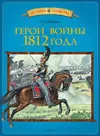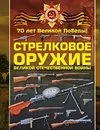
-
 Anglický jazyk
Anglický jazyk
Cold War surface-to-air missiles of the United Kingdom
Autor: Source: Wikipedia
Source: Wikipedia. Pages: 23. Chapters: Blowpipe (missile), Bristol Bloodhound, English Electric Thunderbird, Javelin (surface-to-air missile), Rapier (missile), Sea Cat, Sea Dart (missile), Sea Slug (missile), Sea Wolf (missile). Excerpt: The Bristol Bloodhound... Viac o knihe
Na objednávku, dodanie 2-4 týždne
13.95 €
bežná cena: 15.50 €
O knihe
Source: Wikipedia. Pages: 23. Chapters: Blowpipe (missile), Bristol Bloodhound, English Electric Thunderbird, Javelin (surface-to-air missile), Rapier (missile), Sea Cat, Sea Dart (missile), Sea Slug (missile), Sea Wolf (missile). Excerpt: The Bristol Bloodhound is a British surface-to-air missile developed during the 1950s as the UK's main air defence weapon, and was in large-scale service with the Royal Air Force (RAF) and the forces of four other countries. The Bloodhound Mk. I entered service in December 1958 and the last Mk. II missile squadron stood down in July 1991, although Swiss examples remained operational until 1999. After the end of the Second World War, UK air defences were allowed to fall into disuse, the assumption being it would be a decade before another war started. However, the Soviet atomic bomb test of 1949 forced a re-evaluation of that policy, and UK defence planners started studying the problems of building a more integrated air defence network than the patchwork of WWII expediencies. The Cherry Report called for a reorganisation of existing radars under the ROTOR project along with new control centres to better coordinate fighters and anti-aircraft guns. This was strictly a stop-gap measure however; over a longer term it would require deployments of new long-range radars in place of the Chain Home systems from the war, command and control sites able to survive a nuclear attack, interceptors of ever-increasing performance, and anti-aircraft missiles and guns to provide a last-ditch defence. The missile portion was the newest and least understood technology. In order to deploy quickly and gain experience with these systems, the "Stage Plan" was developed. "Stage 1" called for missiles with a range of only 20 miles with capabilities against subsonic or low-supersonic attacking aircraft, which were assumed to be at medium or high altitudes. The Stage 1 missile would be used to protect the V bomber bases in the UK, as well as the British Army in the field. The Stage 1 missile would be later replaced with a much higher-performance and longer-range "Stage 2" system in the 1960s, which would have capability against supersonic targets at longer ranges. Two entries were accepted for t
- Vydavateľstvo: Books LLC, Reference Series
- Rok vydania: 2019
- Formát: Paperback
- Rozmer: 246 x 189 mm
- Jazyk: Anglický jazyk
- ISBN: 9781155437965

 Ruský jazyk
Ruský jazyk 










